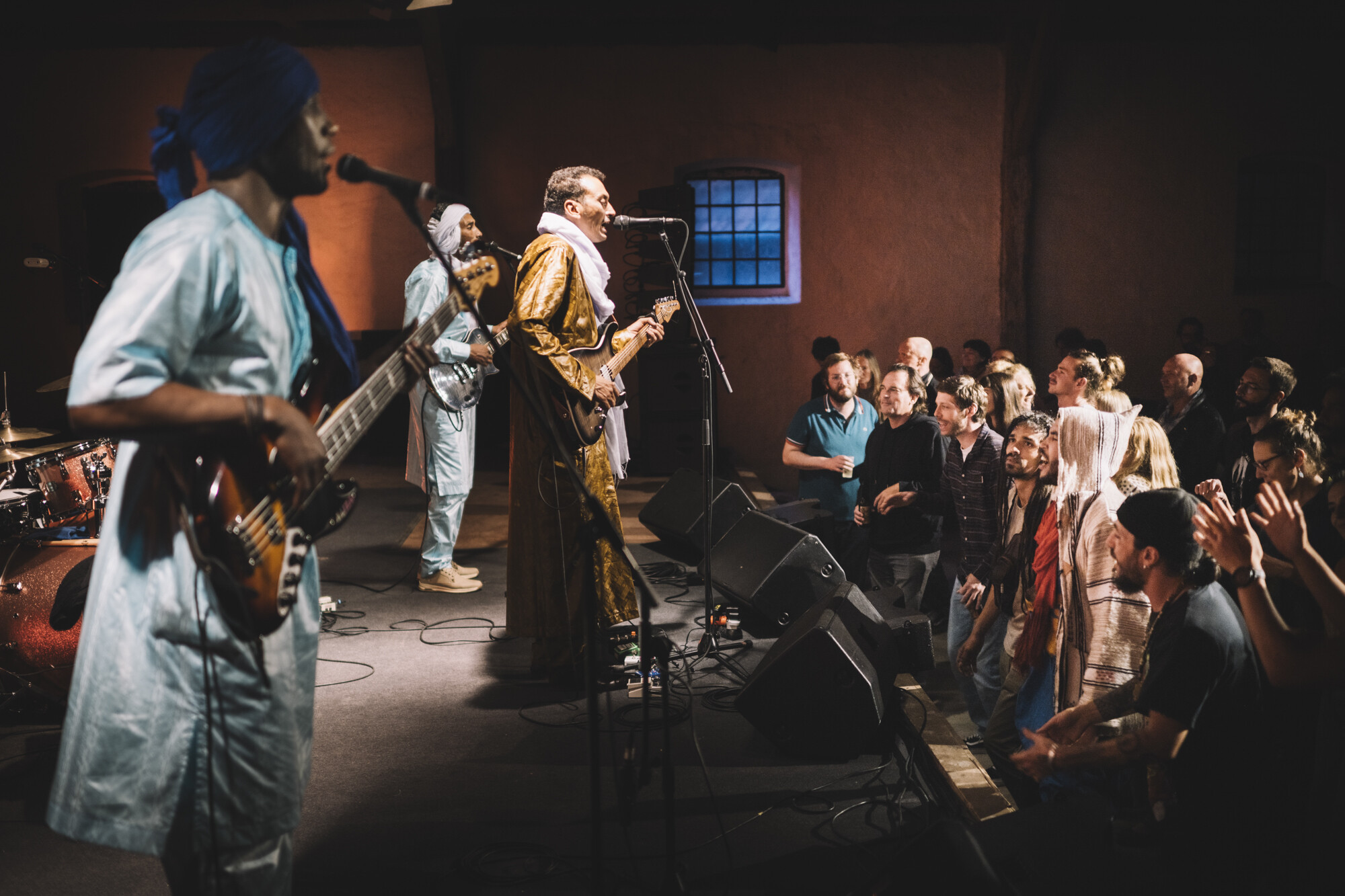
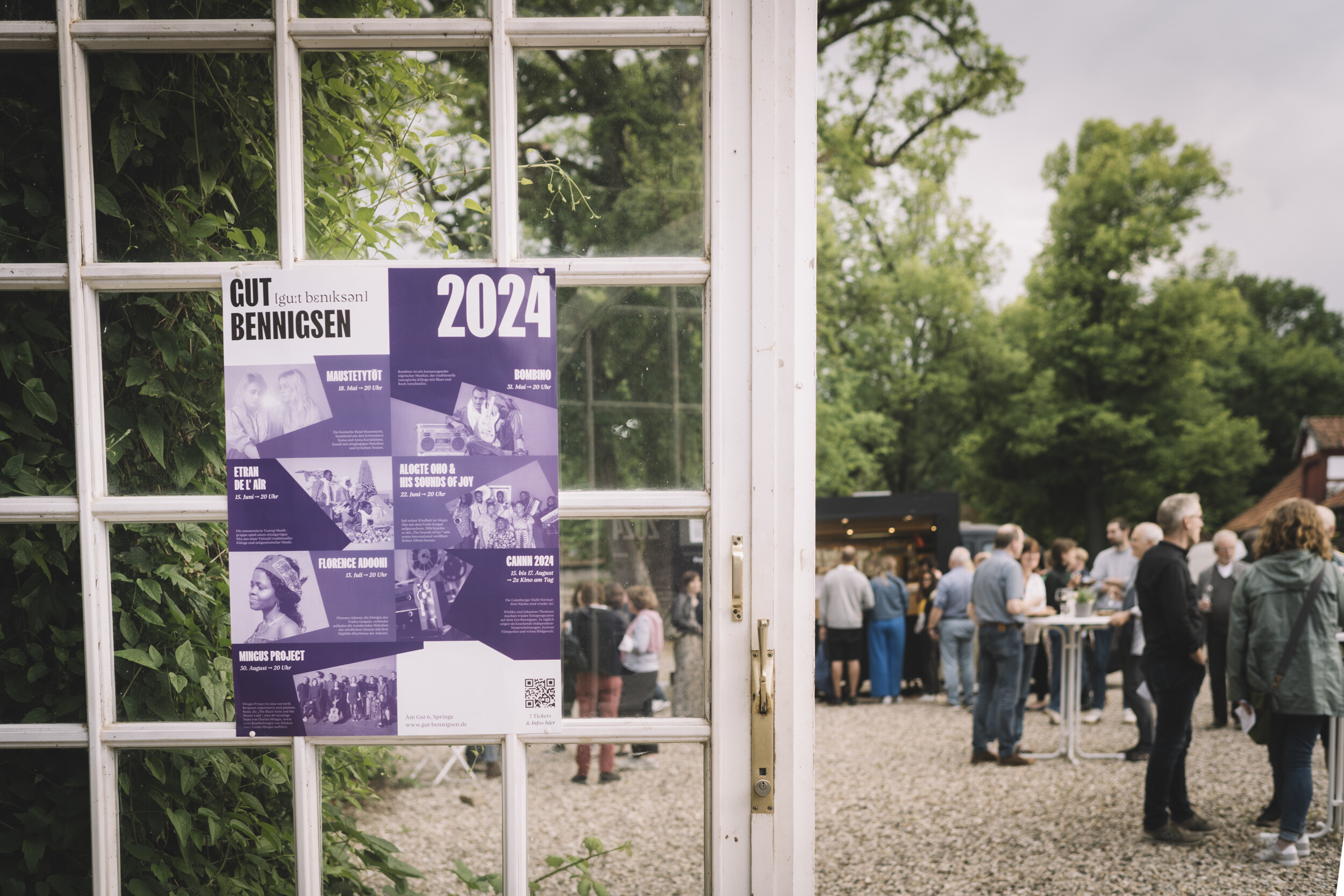
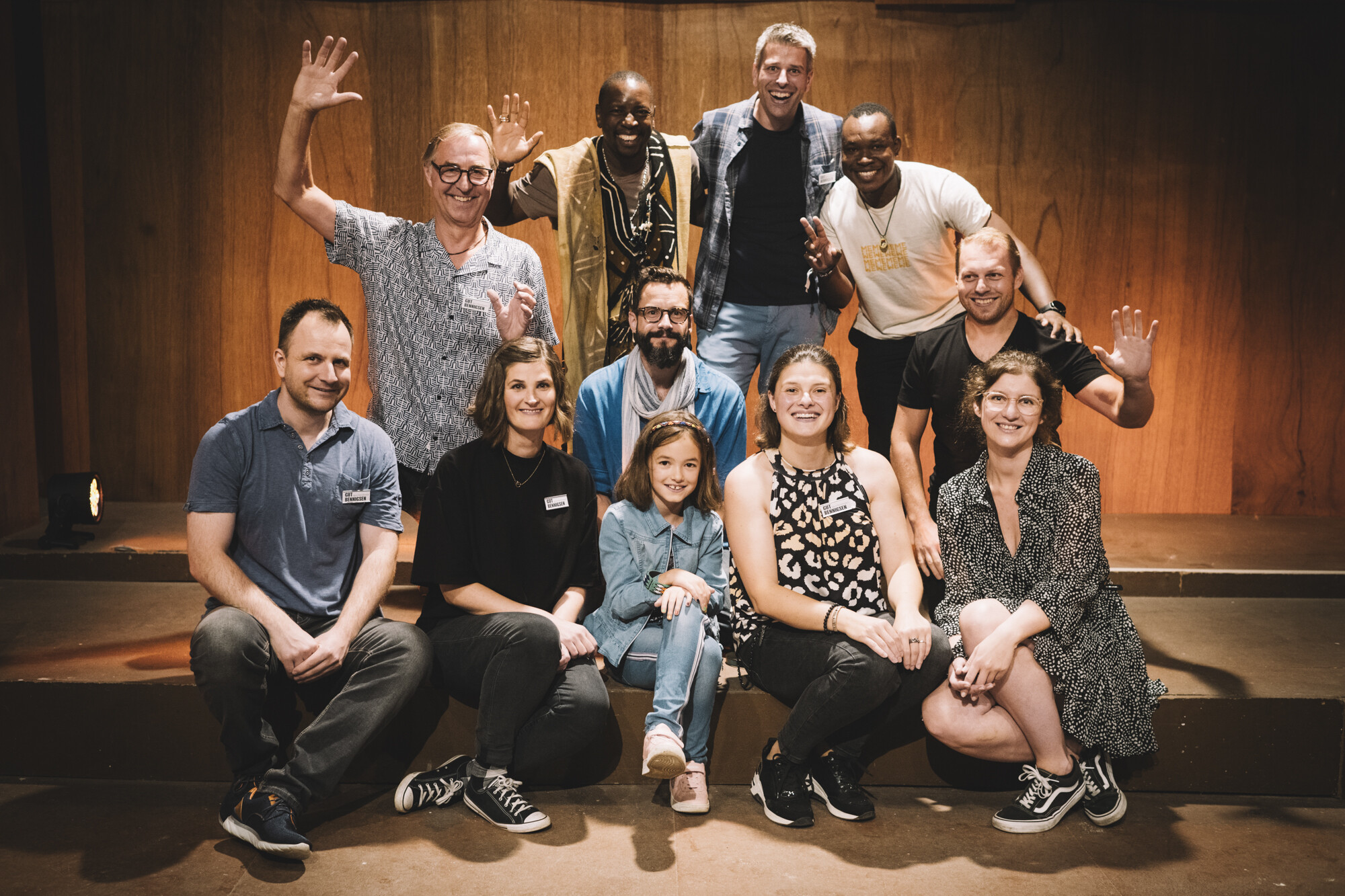
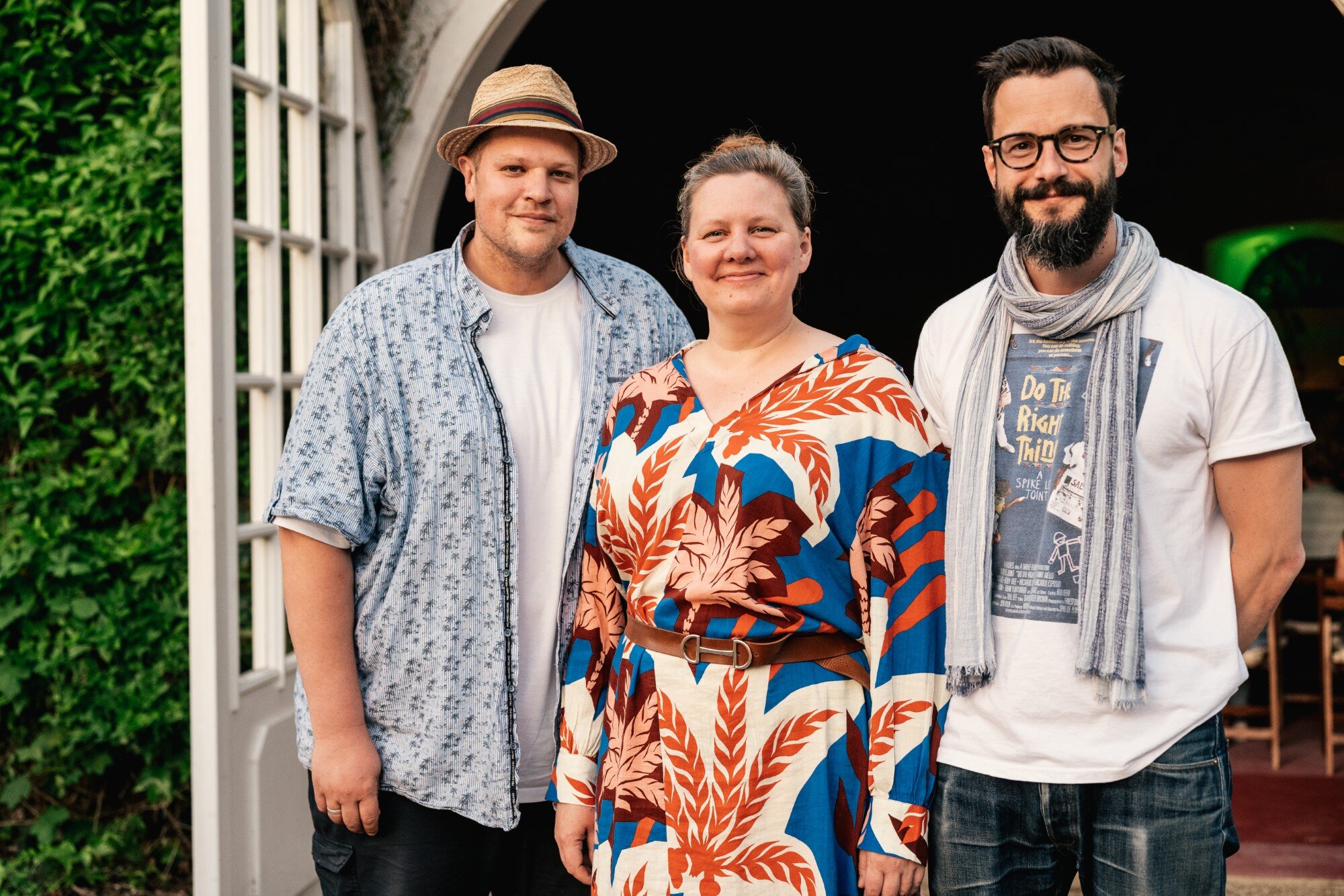
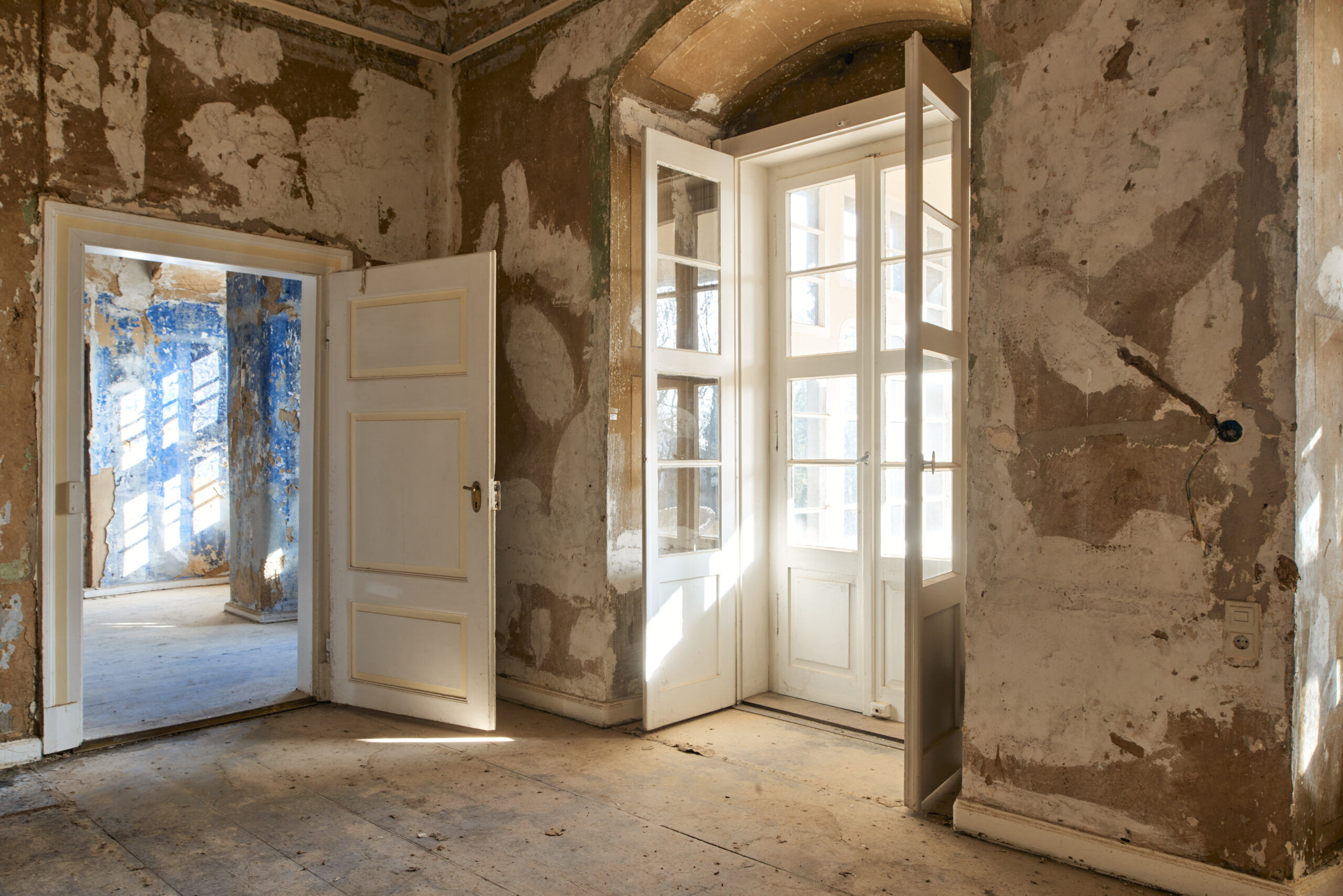
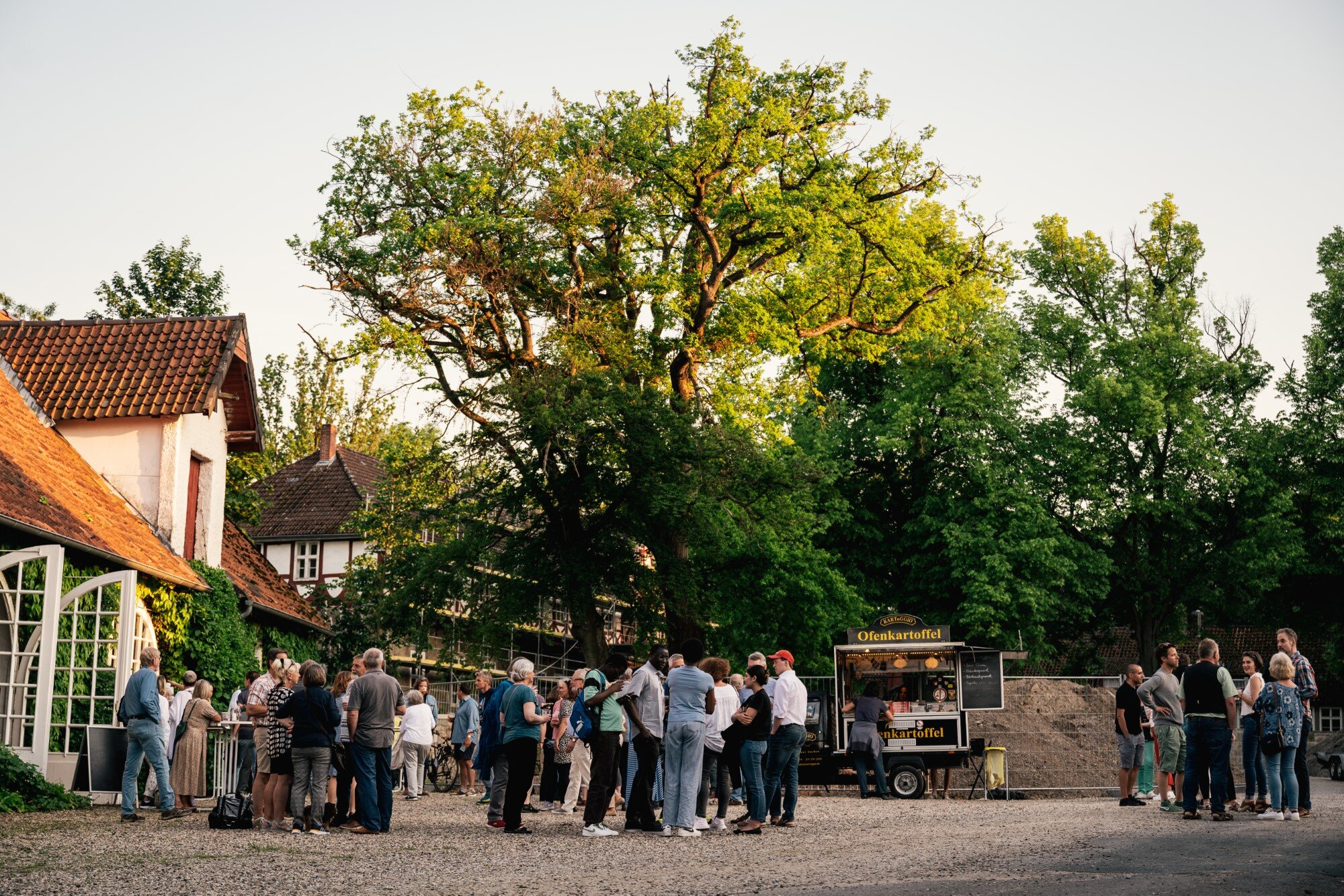
WELCOME!
Since 1311 the manor is documented in the possession of the family von Bennigsen. However, the oldest known building, a moated castle built in the 10th century, can be traced much earlier.
For the Hildesheim Collegiate Feud, among other things, the manor house located on the “island” was destroyed, which was rebuilt from 1566. The longitudinal building consists of a solid masonry basement and first floor and an upper floor constructed of half-timbering with a flat hipped roof. The flight of steps in the courtyard and the bay window on the grave side are clearly more recent structural changes. Nevertheless, the impression of a castle surrounded by water on all sides has always remained.
The rest of the building stock is distributed on the extensive area mainly around the two farmyards, very close to the patronal church of St. Martin. Here is also the main entrance, the round-arched portal dated around 1700 with the family coat of arms – an oblique crossbow shaft – in the gable field.
The property, which was always used for agricultural purposes as well, and the buildings belonging to it were repeatedly enlarged and changed until the 19th century. Among other things, the adjacent kitchen garden to the north of the “island” was transformed into a tree-lined park and adjacent farmland was gradually annexed to the park. Numerous view axes, water installations and memorial stones have survived to this day. From 1860 onwards, Rudolf von Bennigsen (1824-1902) continued to expand the park and increasingly planted exotic and quite rare woody plants.
Finally, Rudolf von Bennigsen used the “Yellow House” – a classicist country villa built in the estate park by his father, Carl von Bennigsen – as his retirement home from 1897.
Rudolf von Bennigsen is probably still one of the best known family members today. An early legal career was followed by work as a deputy in the Estates Assembly of the Kingdom of Hanover. From 1866 he moved to the Prussian House of Representatives. In 1871, as a member of the Reichstag, he led the parliamentary group of the National Liberal Party, which he had co-founded and which was the strongest political force in the early years of the German Empire. As a reflection of his multifaceted personality, his library has been preserved in the main house.
Since 2019, work has been underway on ways to repair the park and historic building stock. The focus here is not only on a monument-compatible and particularly gentle approach, but also on energy considerations. In this way, the entire site could be completely self-sufficient in electricity in the future and thus operate on a CO2-neutral basis.
In the meantime, the façade scaffolding has been erected on the main building and renovation work has begun. The central flight of steps on the main side was measured three-dimensionally in advance, dismantled in accordance with the preservation order and stored. For the ice cellar in the park, the renovation work is scheduled to begin in the fall of 2023. On September 10, 2023, the building was opened to the interested public on “Open Monument Day”. The small pavilion on the island has now been completed.
Despite extensive construction activity on the estate, this year’s program of events offers a small but fine selection of unique concerts, performances and movie nights. African sounds, jazz and cinema, fantastic weather, delicious baked potatoes and exquisite wines inspire the numerous visitors and invite them to join in. The eyes, ears, palate and heart are catered for and in the beautiful surroundings everyone can unwind for once. We are looking forward to your visit!
Photos: Moritz Küstner, Sofie Puttfarken, Anna Kristina Bauer


